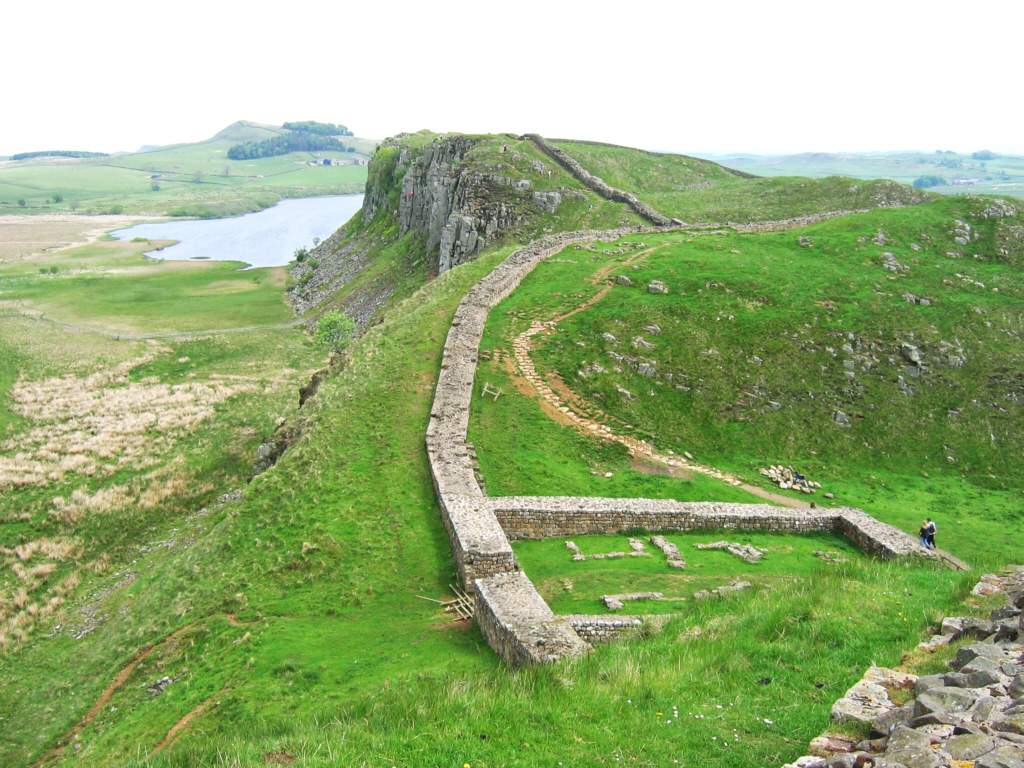Hadrian’s Wall, the massive stone fortification built by Emperor Hadrian in the 2nd century on the border between Roman Britain and Caledonia inhabited by Pictish tribes, is threatened by climate change. Raising the alarm, in year number 1900 since construction began (the Wall was in fact built between 122 and 128), is Andrew Birley, director of excavations and chief executive officer of the Vindolanda Trust, the organization that manages archaeological excavations in the area and is named after the Vindolanda Fort, located about two kilometers from the Wall.
Why Hadrian’s Wall is in danger of being compromised by climate change is quickly stated: the fortification stands on land of bogs and swamps, very wet areas that have protected the remains of the Wall for nearly two millennia. With climate change, the soil heats up faster than the air temperature causing it to dry out and let oxygen into the cracks that are created in the soil as a result of this process. “When oxygen enters the soil,” Birley explained to Agence France Presse, “delicate artifacts, those made of leather, fabric, wooden objects, break down, decompose and are lost forever.” There are indeed stone and wooden structures around the Wall, but there are also remnants of the life that was led in the area: clothing, tools, weapons, footwear, handwritten tablets. A very useful insight into what life was like in 2nd-century Britain.
At present, only about a quarter of the Vindolanda site has been excavated, and the fort is but one of fourteen similar buildings along the route of Hadrian’s Wall, which moreover was declared a UNESCO World Heritage Site in 1987 and is also one of the most visited monuments in the United Kingdom. “Less than one percent of Hadrian’s Wall has been archaeologically explored,” Birley added, “and much of this landscape is protected in this wet peat environment-a landscape that is really threatened, though.”
Wet peatlands have helped preserve artifacts that tell the story of life in this area once considered remote, at the edge of the known world. “They are fantastic,” Birley says, “because they completely changed our perception of the Roman Empire and the Roman army. If these artifacts had not survived, we would have lost a lot of information-this is what is being threatened because of climate change.”
Several events are planned during 2022 to celebrate the 1900th anniversary of the beginning of the wall’s construction. According to Birley, the annivesary will be an opportunity to reflect on how to ensure that the Wall and the excavation finds will still be available to future generations in another 1900 years. Now, in short, it is no longer a matter of defending Roman Britain from Caledonia, but of defending Hadrian’s Wall from climatic change. “Can we find out what is happening to these sites? Can we intervene where we can to protect the sites? And can we save the material before it disappears forever?”: these are the questions Birley is asking the world.
Photo: a section of Hadrian’s Wall between Housesteads and Once Brewed National Park. Photo by Michael Hanselmann
 |
| Hadrian's Wall threatened by climate change. The excavation director's warning. |
Warning: the translation into English of the original Italian article was created using automatic tools. We undertake to review all articles, but we do not guarantee the total absence of inaccuracies in the translation due to the program. You can find the original by clicking on the ITA button. If you find any mistake,please contact us.